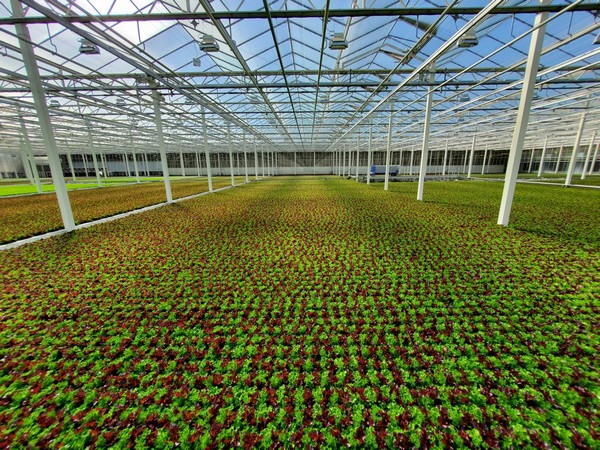Supplies of greenhouse greens from Canada are strong. Rindi Bristol, senior director of Lethbridge County, AB-based Whole Leaf notes that the company recently reevaluated its leafy greens assortment and adjusted volumes in certain varieties. “Our volume is actually on pace or even a smidgen better than last year,” says Bristol.
At peak summer production, Whole Leaf harvests 400,000 plants weekly. As fall approaches that number decreases slightly, although with disciplined growing, Whole Leaf is in best position ever to carry consistent volume and quality through the shoulder season and into the winter months, she adds.

Overall, while Whole Leaf greenhouse is home to a number of leafy greens and mixed lettuce combinations, its red Batavia lettuce is proving particularly popular with consumers. “We’ve found a niche in growing it. It’s a unique item that consumers have really responded to and it’s seeing a surge in interest,” says Bristol.
Demand for the greens has been strong throughout the summer and retail demand is strong going into the fall as well. “Consumers want to support local growers and we’ve been on the shelves for four years now so we’ve become a staple,” she says. “We just completed our “Summer of Salads” contest, where entries topped 20,000 and the engagement on social media channels was exceptional. We see that demand increases in the retail portion of our business in the fall but the foodservice side’s demand tends to stabilize or decrease a bit.”
While Whole Leaf distributes to retailers and foodservice clients across Canada, it also has customers in Washington and Oregon.
Input costs up
As for pricing, greenhouse and controlled-environment agriculture (CEA) product generally promise stable pricing to shield consumers and retailers from the volatility involved in commodity markets. “Unfortunately because of the pressures and increases in the global supply chain on corrugate, shipping costs, resin, and more, our business has seen a price increase,” Bristol says. “Our prices have had to increase from less than one percent to about 2.9 percent and it’s our first adjustment in over four years.”

Looking ahead though, greenhouse product is coming into an interesting time that may offer an opportunity to differentiate further from the non-greenhouse grown product.
“We know greenhouse growing saves 95 percent more water than a conventionally grown product. But what else can we do that’s better?” Bristol asks. In this time when many consumers are increasingly concerned about climate change, this may mean greenhouse growers can focus on other sustainability initiatives such as reducing energy consumption, rethinking packaging, reducing wastewater and more.
 For more information:
For more information:
Rindi Bristol
Whole Leaf
Tel: +1 (306) 385-7460
[email protected]
http://inspiredgreens.ca/
